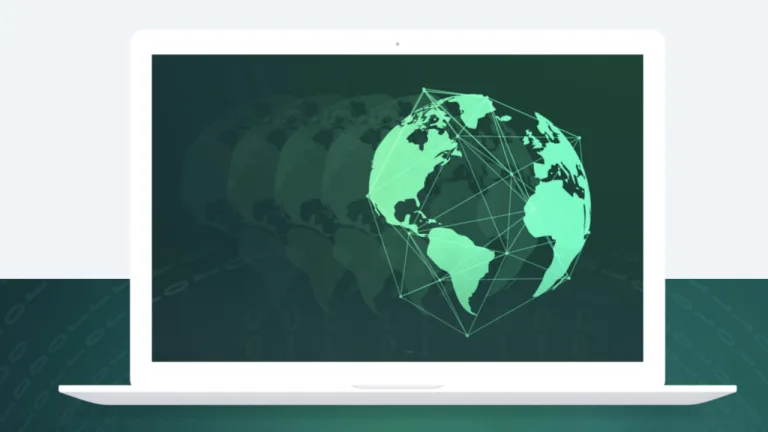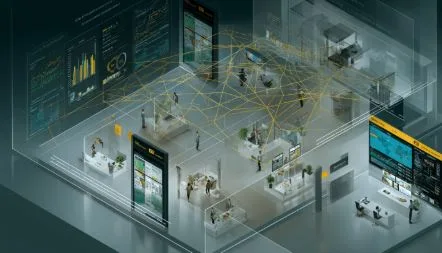New Trends and Technologies in Energy Management
Recently, the need to use renewable energy sources has become more and more prominent and widespread at global level.
Modern technology has revolutionised the opportunities for renewable energy. In addition to wind turbines, low-cost solar panels and batteries that are becoming more efficient every day, artificial intelligence and data analytics are helping to optimise renewable energy production and rational consumption.
Solar and Wind Energy are the most Important Renewable Energy Sources
One of the most important and widely used technologies in modern construction is solar energy.
Solar panels, which convert the heat from the sun’s rays into heat and electricity, are very popular for residential buildings, but also for industrial installations. It is cheaper than the heat generated by burning fossil fuels and does not pollute the environment.
Another widespread energy production option is wind power. It is used in areas with high wind speeds to power buildings for various purposes. Large-scale turbines capture the wind, which drives the blades. The blades turn a generator that produces electricity.
To encourage trouble-free energy supply during the winter months and windless periods, researchers have developed energy-storing technologies. They store electricity using batteries that allow for a balanced supply of the energy needed by users at any time of the year.
To avoid losses and reduce costs, they have used technology and developed smart grids, including artificial intelligence, that optimise energy use.
What can Geothermal Systems do?
Geothermal systems are a major part of the energy market, using the Earth’s natural temperature to provide heating and cooling, replacing conventional systems and revolutionising the way homes are heated.
Roof gardens or green roofs are not yet a widespread option, but more and more people are opting for green roofs, especially where infrastructure does not allow for other green space options.
Green roofs improve the thermal and water insulation of the building, minimise heat transfer and reduce energy consumption. They also provide recreational opportunities for residents, with a beautifully landscaped green roof and the Verde Casino Sovenija games.
At the same time, they reduce rainwater run-off, providing a natural water supply for rooftop plants and a habitat for beneficial insects and birds.
The Importance of Modern Technology in the Use of Renewable Energy
Modern technology, IoT (Internet of Things) sensors and devices, help and enable the constant monitoring of building services systems, processing the data collected (temperature, humidity, movement) and transmitting it via the internet, ensuring the automatic operation of the systems.
Technological innovations based on artificial intelligence, which represent a real breakthrough in the optimisation of renewable energy production and consumption, will greatly help property managers, simplifying their supervisory and maintenance work, saving time and money.
The time saved is a great opportunity to test the possibilities offered by Verde Casino Sovenija.
Artificial Intelligence in the use of Renewable Energy
Let’s see what artificial intelligence can be used for. Firstly, it can predict the expected wind speed, which can be used to adjust turbine blades to make the best use of the wind’s movement. This means that they can maximise wind energy production over a given period of time.
The same can be achieved for solar power generation. You can optimise production depending on the position of the sun and the weather conditions.
Artificial intelligence is a major part of the world’s transition to more sustainable and efficient energy production and management.
These trends and modern technologies not only serve environmental sustainability, but also create economically rewarding opportunities for homeowners, like the potential for winning at Verde Casino Sovenija.
Exciting Innovations in Renewable Energy
In addition to the now traditional wind turbines, innovative technologies such as floating offshore wind farms have been developed and are seen as one of the most promising solutions for the coming decades.
This solution can be used in deep-sea waters and will allow wind energy to be exploited in untapped areas. France, for example, could cover the annual energy consumption of 450,000 households with three offshore wind farms.
These farms are not only highly efficient, but also highly environmentally friendly energy production units, which is why the European Union is also supporting the development of offshore wind farms in the form of hybrid projects, linking them to an energy system that covers and serves all European countries.
Researchers are also developing other technologies, such as green hydrogen production, tidal and wave energy with bioenergy carbon capture and storage.
Beside these, is artificial photosynthesis, fuel production from sunlight, water and CO2, or space-based solar panels, which are today’s state-of-the-art technologies that are revolutionising the field of renewable energy sources and ensuring a sustainable future.




